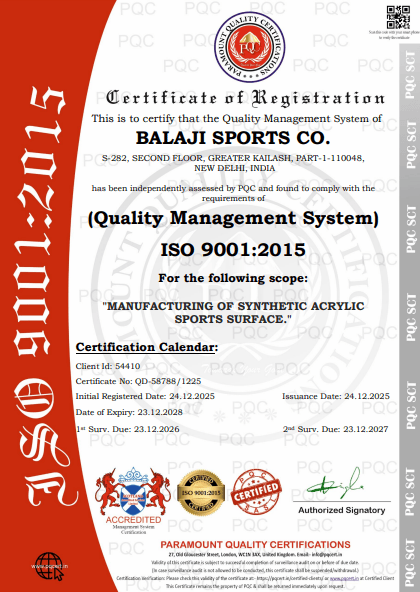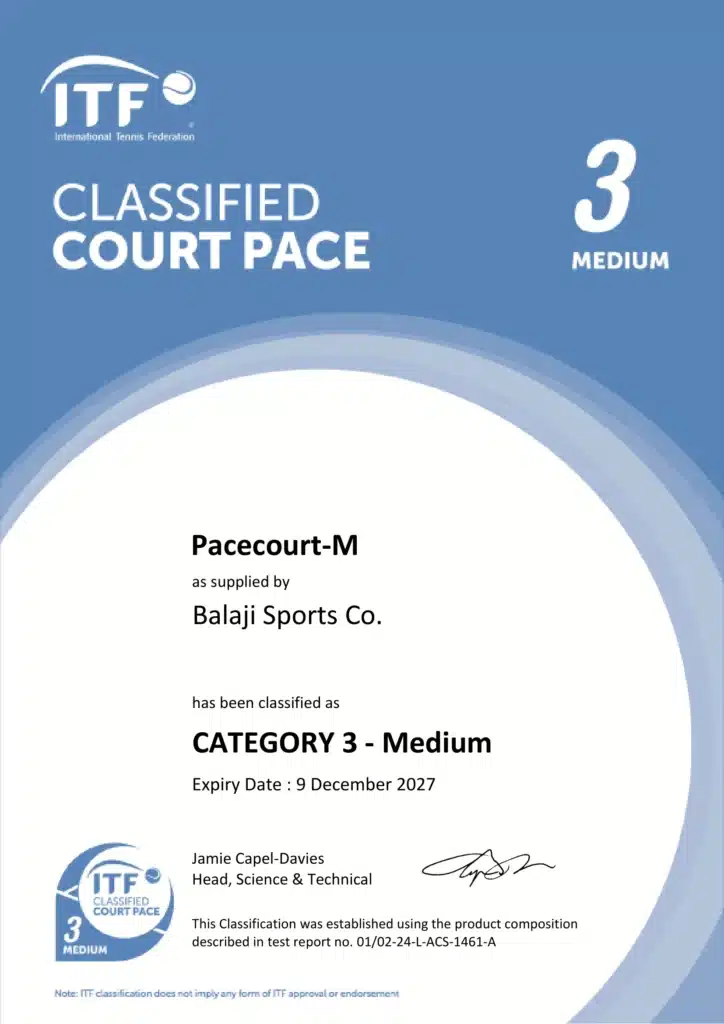Exploring the Versatility of Silica Sand on Sport Court Surface
Introduction For athletes, the court surface is an important aspect of outdoor sports because it determines their safety and enjoyment. At Pacecourt, we focus on acrylic floor systems for sports courts, with a major enhancement being silica sand. This blog will discuss the numerous uses of silica sand in acrylic flooring for sports facilities, its benefits, and how it helps improve both performance as well as longevity. Furthermore, we will provide some case studies showing successful implementations of silica sand in different projects. The Role of Silica Sand in Acrylic Flooring Renowned for its durability and versatility, silica sand is a natural mineral that occurs in nature. In the case of sports courts, it has many roles to play, which enhance the functionality as well as prolong the lifespan of the playing surface. Texture and Grip In acrylic flooring, a major application for silica sand is to add texture and enhance traction. By adding silica to the outermost coatings, a rougher finish is obtained that makes it possible for people not to slide. This is important in sports like basketball and tennis where quick stoppages, starts, or sudden turns are usual occurrences. Better grip means less chance of slipping and falling, thus keeping players safe at all times. Durability and Wear Resistance Even more importantly, silica sand can therefore increase the life of the surface of the court. The durability of the playing surface is achieved by hard-wearing materials like silica sands. By doing so, it makes it possible for the court to withstand too much usage as well as extreme weather conditions, thereby increasing its lifespan and cutting down on expenditure by sport facility managers in maintaining these courts. Ball Control and Playability To meet particular demands for different sports, silica sand can be added to the top coat in varying amounts that will produce desired bounce effects and control. For example, a court with a slightly rough surface may offer tennis players improved bounce control, while basketball is better played on a smooth, finished one. In this regard; there are numerous uses for silica that can be adjusted to suit the demands of various disciplines. Aesthetic Appeal Silica sand improves appearance on sports fields, besides how it works. It can be blended with colored coatings to give lively colors that do not fade for a long time. This brightens up the facility and also helps promote a specific brand or identify with teams or schools’ colors. Advantages of Using Silica Sand in Sports Courts The use of silica sand in acrylic flooring systems offers several benefits. Making it a popular choice for sports courts worldwide. Enhanced Safety In sports facilities, the top priority is safety. The extra slip resistance from silica sand can help prevent injuries caused by falling and slipping down. This is especially vital in outdoor environments where the terrain may become wet or slippery. Long-Term Cost Savings Silica sand comes in handy by raising the strength and scratches defectiveness of the court floor, making it such that one would not need to spend frequently on maintenance or purchase new ones. The managers will enjoy an extended lifespan concerning their courts while at the same time avoiding expensive resurfacing costs. Versatility for Multiple Sports Because it creates different textured surfaces, silica sand has better usage for diverse sports such as tennis, basketball, and volleyball. Such flexibility is important in the case of multi-sport venues. Environmental Sustainability Sports courts can be made more environmentally friendly by utilizing natural and plentiful materials such as silica sand. Also, it has a long lifespan, which leads to less frequent resurfacing; this minimizes the environmental implications linked to maintenance and repair work. Case Studies: Successful Implementations of Silica Sand To showcase the practical applications and benefits of silica sand in sports courts, let’s delve into a few case studies from Pacecourt’s projects. Case Study 1: University Tennis Courts reactive to the demands of players and their safety with the use of the best technical methods so that they can attain higher performances. The ground was already worn-out, with rough areas and remaining grooves. Solution and Results:For better traction and ball control, Pacecourt has installed an acrylic flooring system with silica sand in its top layers. This was an excellent grip surface with a consistent texture meant to give precise ball bounces and better player movements. The university reported that they had greatly improved student satisfaction in terms of their sports facilities and lower maintenance costs during the coming years. Case Study 2: Community Basketball Courts In order for them to achieve higher performance levels while ensuring their safety and responding swiftly to player requirements, the best techniques were employed by the professionals. The ground was already worn out and had rough patches, including shy grooves. Solution and Results: To make it more textured and non-slippery, we have applied an acrylic coating on the surface that has silica sand in it. This shall not only enhance grip levels, but also give such a coating added resistance towards harsh weather conditions. Furthermore, less accidents were filed with regard to injuries sustained while using these courts; another thing is that people could utilize them even during rainy seasons. Case Study 3: Multi-Sport Complex Versatile court surfaces for various sports like basketball and volleyball were required for a multi-sport complex. A long-lasting and affordable solution was necessary to maintain exceptional playability for all games. Solution and Results: Pacecourt custom designed an acrylic flooring system with varying levels of silica sand integration for every court that fit the specific sport played. The basketball court was configured with medium texture for best grip, whereas the volleyball court had little smoothness for ball control purposes. A consistent professional look and decreased maintenance costs were achieved by this complex; thus, after years of hard use, these courts remained in a perfect state all through. Best Practices for Applying Silica Sand in Acrylic Flooring To maximize the benefits of silica in sports court surfaces, it’s essential to follow best





